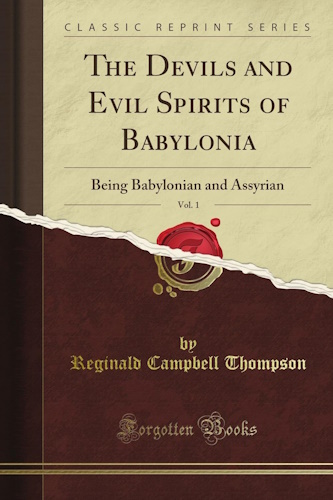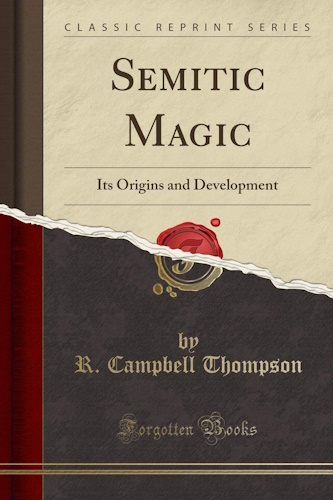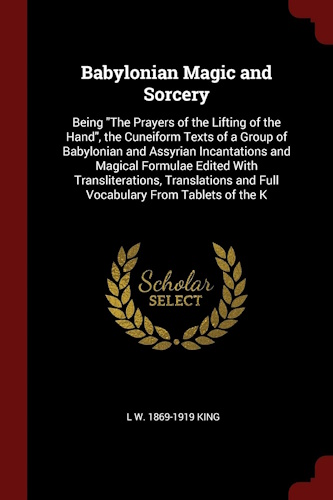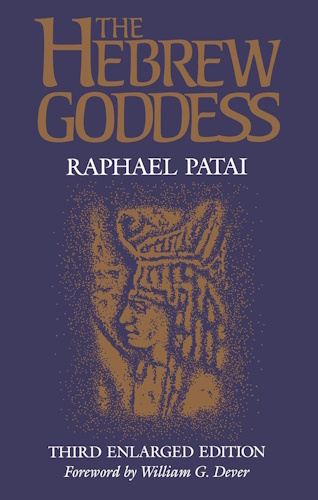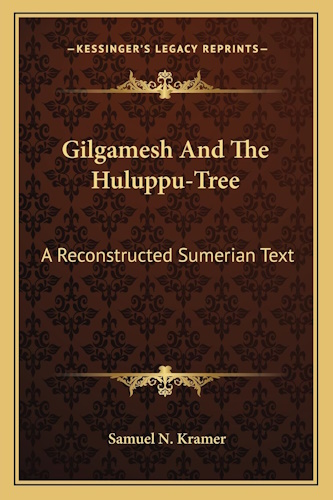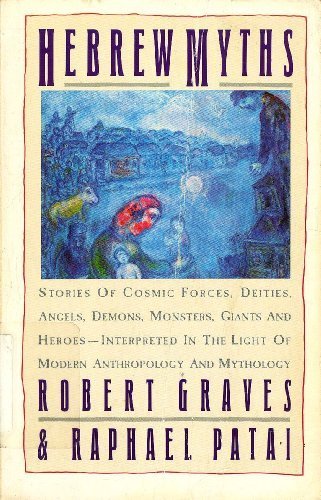![]()
The Story of Lilith
The Alphabet of ben Sira Question #5 (23a-b)
Translated by:
Norman Bronznick (with David Stern & Mark Jay Mirsky) (Stern90)
![]()
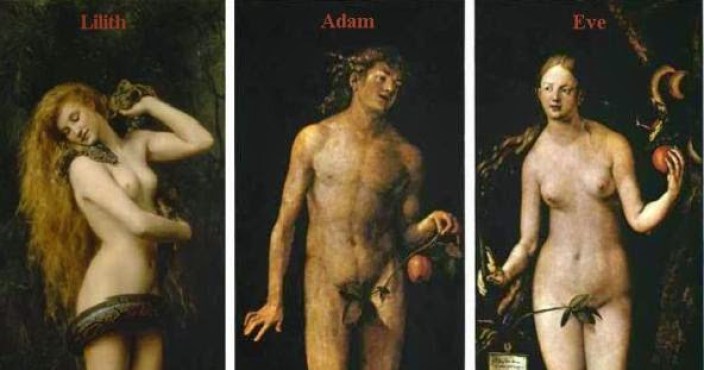
The Alphabet of ben Sira is the earliest form we know of the Lilith legend familiar to most people (that is, to most people who are familiar with Lilith at all). It is here that we find Lilith as Adam's first wife. Scholars tend to date the Alphabet between the 8th and 10th centuries, CE. Whether the story itself is older, or, if so, how much older is not possible to say. Amulets like the one described in the first paragraph are, of course, much older. The author of the Zohar, R. Moses de Leon, was aware of the Alphabet's version of Lilith, at least according to Gershom Scholem (Major Trends in Jewish Mysticism, p. 174), but he also knows other, probably older, Lilith traditions which do not mesh well with this one. No attempt is made, apparently, to harmonize them. For one of these other traditions, and comments on whether the author was familiar with the Alphabet, see Treatise on the Left Emanation. The idea of Eve having a predecessor is also not new to ben Sira, and can be found in Genesis Rabbah. But those traditions make no mention of Lilith, and, in fact, do not mesh well with ben Sira's version of the story. [AH]
Soon afterward the young son of the king took ill, Said Nebuchadnezzar, "Heal my son. If you don't, I will kill you." ben Sira immediately sat down and wrote an amulet with the Holy Name, and he inscribed on it the angels in charge of medicine by their names, forms and images, and by their wings, hands, and feet. Nebuchadnezzar looked at the amulet. "Who are these?"
"The angels who are in charge of medicine: Snvi, Snsvi, and Smnglof. After God created Adam, who was alone, He said, 'It is not good for man to be alone' (Gen. 2:18). He then created a woman for Adam, from the earth, as He had created Adam himself, and called her Lilith. Adam and Lilith began to fight. She said, 'I will not lie below,' and he said, 'I will not lie beneath you, but only on top. For you are fit only to be in the bottom position, while am to be in the superior one.' Lilith responded, 'We are equal to each other inasmuch as we were both created from the earth.' But they would not listen to one another. When Lilith saw this, she pronounced the Ineffable Name and flew away into the air. Adam stood in prayer before his Creator: 'Sovereign of the universe!' he said, 'the woman you gave me has run away.' At once, the Holy One, blessed be He, sent these three angels to bring her back.
"Said the Holy One to Adam, 'If she agrees to come back, fine. If not she must permit one hundred of her children to die every day.' The angels left God and pursued Lilith, whom they overtook in the midst of the sea, in the mighty waters wherein the Egyptians were destined to drown. They told her God's word, but she did not wish to return. The angels said, 'We shall drown you in the sea.'
"'Leave me!' she said. 'I was created only to cause sickness to infants. If the infant is male, I have dominion over him for eight days after his birth, and if female, for twenty days.'
"When the angels heard Lilith's words, they insisted she go back. But she swore to them by the name of the living and eternal God: 'Whenever I see you or your names or your forms in an amulet, I will have no power over that infant.' She also agreed to have one hundred of her children die every day. Accordingly, every day one hundred demons perish, and for the same reason, we write the angels' names on the amulets of young children. When Lilith sees their names, she remembers her oath, and the child recovers."
Eliezer Segal's Critique of the Alphabet as a Lilith source.
Looking For Lilith
The feminist critique of conventional values has not overlooked the Jewish tradition. Whether or not one acknowledges the validity of all the charges that have been leveled against the treatment of women in Jewish law and theology, it is hardly possible to ignore these issues.
As one who is normally sympathetic with feminist aspirations, I have often been disappointed with the scholarly standards of the debate, especially when it has been directed towards the classical texts of Judaism. In the course of polemical ideological exchanges, I find too frequently that sweeping generalizations are being supported by flimsy or questionable evidence, with a disturbing disregard for factual accuracy and historical context.
As an example of this sort of scholarly sloppiness, I wish to discuss an intriguing Hebrew legend that has found its way into dozens of recent works about Jewish attitudes towards women.
The legend in question was inspired by the Bible's dual accounts of the creation of the first woman, which led its author to the conclusion that Adam had a first wife before his marriage to Eve. Adam's original mate was the demonic Lilith who had been fashioned, just like her male counterpart, from the dust of the earth. Lilith insisted from the outset on equal treatment, a fact which caused constant friction between the couple. Eventually the frustrated Lilith used her magical powers to fly away from her spouse. At Adam's urging, God dispatched three angels to negotiate her return. When these angels made threats against Lilith's demonic descendants, she countered that she would prey eternally upon newborn human babies, who could be saved only by invoking the protection of the three angels. In the end Lilith stood her ground and never returned to her husband.
The story implies that when Eve was afterwards fashioned out of Adam's rib (symbolic of her subjection to him), this was to serve as an antidote to Lilith's short-lived attempt at egalitarianism. Here, declare the feminists matronizingly, we have a clear statement of the Rabbinic Attitude Towards Women!
There is only one slight problem with this theory: The story of Lilith is not actually found in any authentic Rabbinic tradition. Although it is repeatedly cited as a "Rabbinic legend" or a "midrash," it is not recorded in any ancient Jewish text!
The tale of Lilith originates in a medieval work called "the Alphabet of Ben-Sira," a work whose relationship to the conventional streams of Judaism is, to say the least, problematic.
The unknown author of this work has filled it with many elements that seem designed to upset the sensibilities of traditional Jews. In particular, the heroes of the Bible and Talmud are frequently portrayed in the most perverse colours. Thus, the book's protagonist, Ben-Sira, is said to have issued from an incestuous union between the prophet Jeremiah and his daughter. Joshua is described as a buffoon too fat to ride a horse. King David comes across as a heartless and spiteful figure who secretly delights in the death of his son Absalom, while putting on a disingenuous public display of grief. The book is consistently sounding the praises of hypocritical and insincere behaviour.
So shocking and abhorrent are some of the contents of "the Alphabet of Ben-Sira" that modern scholars have been at a loss to explain why anyone would have written such a book. Some see it as an impious digest of risqué folk-tales. Others have suggested that it was a polemical broadside aimed at Christians, Karaites, or some other opposing movement. I personally would not rule out the possibility that it was actually an anti-Jewish satire--though, to be sure, it did come to be accepted by the Jewish mystics of medieval Germany; and amulets to fend off the vengeful Lilith became an essential protection for newborn infants in many Jewish communities.
Eventually the tale of Lilith was included in a popular English-language compendium of Rabbinic legend, and some uncritical readers--unable or unwilling to check after the editor's sources--cited it as a representative Rabbinic statement on the topic. As tends to happen in such instances, subsequent authors kept copying from one another until the original error turned into an unchallenged historical fact.
Certainly there are volumes of real texts and traditions that could benefit from a searching and critical feminist analysis, and it is a shame to focus so much intellectual energy on a dubious and uncharacteristic legend of this sort.
Footnotes
[1]
First publication: Jewish Free Press Feb. 6 1995.
Bibliography:
J. Dan, The Hebrew Story in the Middle Ages, Jerusalem, 1974.
J. D. Eisenstadt, ed., Ozar Midrashim, Israel, n.d.
![]()
![]()
Disclaimer:
Some material presented will contain links, quotes, ideologies, etc., the contents of which should be understood to first, in their whole, reflect the views or opinions of their editors, and second, are used in my personal research as "fair use" sources only, and not espousement one way or the other. Researching for 'truth' leads one all over the place...a piece here, a piece there. As a researcher, I hunt, gather and disassemble resources, trying to put all the pieces into a coherent and logical whole. I encourage you to do the same. And please remember, these pages are only my effort to collect all the pieces I can find and see if they properly fit into the 'reality aggregate'.
Personal Position:
I've come to realize that 'truth' boils down to what we 'believe' the facts we've gathered point to. We only 'know' what we've 'experienced' firsthand. Everything else - what we read, what we watch, what we hear - is what someone else's gathered facts point to and 'they' 'believe' is 'truth', so that 'truth' seems to change in direct proportion to newly gathered facts divided by applied plausibility. Though I believe there is 'truth', until someone representing the celestial realm visibly appears and presents the heavenly records of Facts And Lies In The Order They Happened, I can't know for sure exactly what "the whole truth' on any given subject is, and what applies to me applies to everyone. Until then I'll continue to ask, "what does The Urantia Book say on the subject?"
~Gail Bird Allen
![]()
![]()

